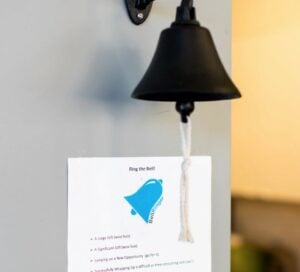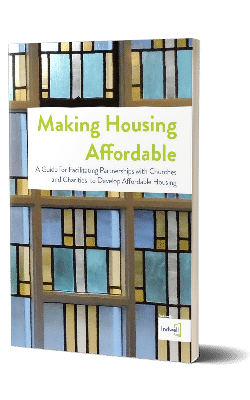HAMILTON, ONTARIO, May 27, 2020 – In the midst of this COVID-19 pandemic, two Hamilton affordable housing projects have quietly set new records for air tightness in larger scale Canadian buildings. Indwell’s 45-unit project in conjunction with Hughson Street Baptist Church at 500 James St N, and their 50-unit project at Parkdale and Melvin in east Hamilton achieved extraordinary marks in mid-construction testing – 80% less than their allowable limit. This bodes well for achieving Passive House certification once completed later this year.
Among other measures, we know that high-performance low-energy buildings are needed to meet current and future sustainability goals. With building operations accounting for up to 40% of global energy consumption, a key challenge has been finding design standards that actually lower that.
Passive House is an internationally recognized approach to designing buildings that need minimal energy to operate, thereby locking in permanent emission reductions. The Passive House method of construction, first used for single family residential buildings, has transitioned to multi-unit residential buildings like Indwell’s. Air tightness is one of five key features that root this approach. While some of the elements have technological solutions, air tightness is achieved by skilled tradespeople.
Graham Cubitt, Indwell’s director of projects and development discusses how Indwell worked with architects, engineers and contractors already in 2016 to rethink its development approach. “It’s taken a mindset shift to change how buildings go together. Everyone remained open to rethinking buildings from the ground up and pays attention to detail before and during construction. Now we’re all comfortable with the new normal of working towards very good air tightness. There’s still fist pumps, though, when we see the initial results on air testing day.”
These projects use readily available materials and familiar techniques trades already know. Cubitt emphasized that a big difference is in how the project schedule and assembly sequences are managed; the building envelope must be enclosed for the crucial first air-tightness test, so the roofing and windows have to be done earlier than may be typical.
“We’ve used two different systems to achieve what we call the building envelope,” explains Josie Costantini, Schilthuis Construction’s passive house lead. “At 500 James St N. the Blue Skin enclosed the building, whereas at McQuesten Lofts we used the Zip System exterior sheathing.”
Triple glazed windows and doors, heavy insulation, elimination of thermal bridging and the use of heat exchange units complete the passive house building elements.
Indwell’s experience with Passive House now spans six multi-residential projects, two completed and achieving anticipated results of low emissions and quality occupant experience. The projects vary from new construction to adaptive reuse, and wood-frame to concrete and steel. In each case, the budgets have been within a few percentage points of conventional quality construction and within the same overall schedule.
When we committed to rethinking how we built, we were worried about whether the Passive House standards would be feasible; now we know that the challenge can and should be embraced. We certainly expected great things from our team and we are thrilled at the record air tightness results we have achieved.
Indwell is a Christian charity that responds to the urgent need to address homelessness in Southern Ontario by providing high-quality, affordable supportive housing. Indwell supports more than 600 tenants in Hamilton, Woodstock, Norfolk County and London, and is expanding into Waterloo Region and Mississauga. Indwell empowers tenants to achieve health goals and active participation in the life of their communities. To learn more, visit indwell.ca.













